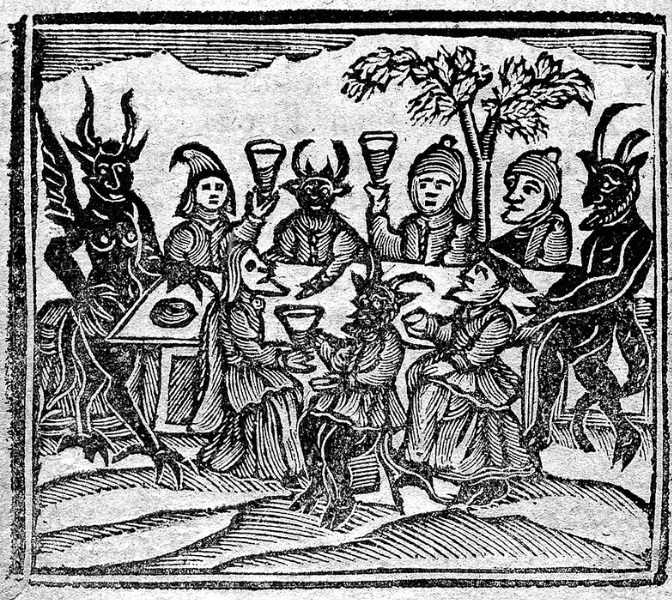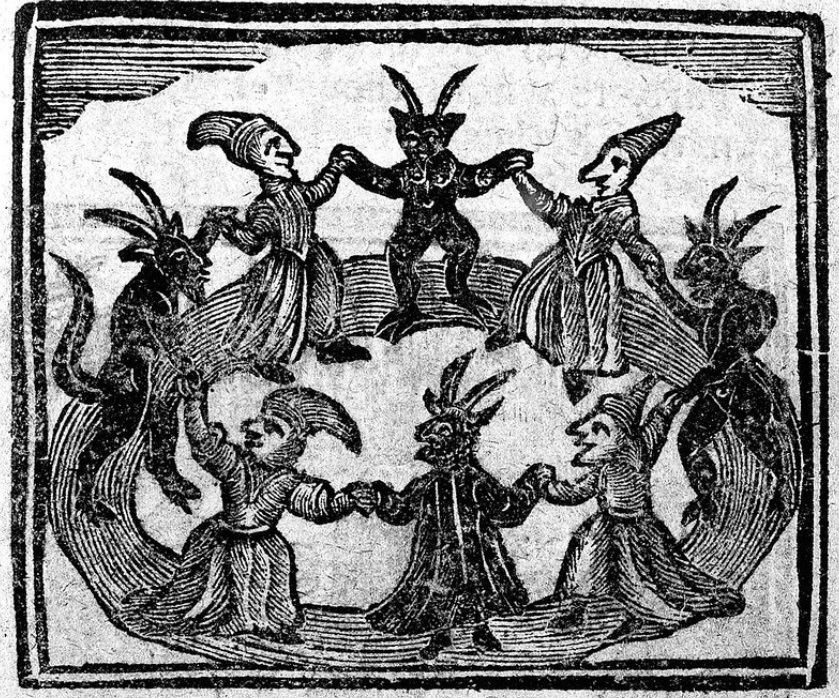In a very entertaining, lucid talk without visual aids, Mary Craig shed light on one of the darker manifestations of 17th century Scottish religious fervour – the persecution of women (and, to a lesser extent, men) accused of witchcraft. To help us understand how this came to be, Mary described a mind-set in that time so different from now. 17th century Scotland was beset by many harvest failures and consequent famines. It was ravished by civil war and its associated horrors. It experienced invasion by Cromwell’s armies. It experienced several outbreaks of plague. A fearful population succoured by the Kirk could only assume that dark forces had it in for them – seeing not just that the four horsemen of the apocalypse were abroad, but that the devil was behind it all.
With the departure of the royal court to London with James 6th a power vacuum was created. The king was represented in Scotland by his Privy Council, but the Presbyterian Church filled much of this power deficit and held greatest sway with the people. The influence of the Kirk over the general population was immense – offering the ‘fear of God’ and/or eternal damnation to those who sinned. People were fearful indeed. This sustained a culture in which the devil was thought to work through the agency of human acolytes abroad in every community. Folk would attach personal misfortune, however slight, to the work of such people and would seek to point the finger of blame at specific individuals – calling them out as witches. There seems little doubt that this accusation was often used to settle personal scores, or to pick out individuals who were ‘different’ or eccentric in some way, however innocent. The vast majority of victims were women.
The accused were brought before the Judiciary and evidence presented by the Kirk. However, it often proved very difficult to provide compelling evidence that the actions identified as witchcraft were anything other than innocent. This paved the way for those who believed, or had others believe, they had infallible ways of identifying witches. The most notorious of these in Scotland were the witch brodders (prickers) who claimed to be able to identify the ‘devil’s mark’ on any suspected witch by pricking the bodies of the accused. Using a needle or similar implement, pricking was continued until an area was found which did not bleed and no pain was felt. This constituted the mark of the devil, even better if it happened to be a mole or other kind of blemish. Generally held as proof-positive of guilt, the poor victim was then sentenced by the Judiciary, executed by strangling and the corpse burned to ashes. Over the course of the later 16th, the 17th and the early 18th centuries just under 4000 women in Scotland were tried as witches, of whom 2558 were executed. Women made 84% of the total! While witch trials and executions were common throughout Europe and, later, North America, Scotland managed a fivefold greater rate per capita than anywhere else.
And so to John Kincaid, the most notorious of all the witch brodders. He was born probably between 1590 and 1600 and seems to have come of ‘bad’ stock. He seemed to arrive from nowhere, first recorded in Tranent in 1649. While he was an illiterate man, he seems to have been a clever self-publicist, convincing all who mattered that he could infallibly identify witches. His first victims appear to have been two women accused of witchcraft in Dirleton. They were arraigned before the Kirk Session and evidence presented, selecting from the usual list: accused of performing some malicious act; ‘confessing’; being accused by someone who had already ‘confessed’; and, most damningly, having the ‘devil’s mark’. John Kincaid performed the necessary pricking to confirm their fate. The Judiciary would then review the evidence and pass sentence.
Kincaid appeared to have a warrant from the Privy Council, a legal necessity for any witch brodder. His was a much sought-after service, and his work took him south of the border to Newcastle as well as to the Borders and Lothians and as far north as Aberdeen. His was a lucrative business: he earned 20/- per witch, a substantial sum in the 17th century. The whole process of trial, execution, burning and disposal was very expensive, with many contributors requiring payment. The one person who always got paid promptly was the witch brodder. John Kincaid nurtured his reputation well, never lacking clients, and made a substantial income. It is thought that about 150-200 people were executed as a direct result of his work. His reputation grew and soon he became a national ‘celebrity’, receiving the Freedom of the Burgh of Forfar in 1661. At this date he also owned a large house in Edinburgh.
However, early in 1662, a complaint was received by the Privy Council that he had located the devil’s mark on an innocent person. Was it a set-up? Who knows? He was also accused of working without a current warrant. Thus, at the considerable age of somewhere between 60 and 70 yr, the Privy Council had him banged up in the Edinburgh Tolbooth while the matters were investigated. It seemed likely to them that many innocent folk had been executed on Kincaid’s ‘evidence’. But what blame might be accorded to the Privy Council itself, through slip-shod administration, should the case be proved? The result was that John Kincaid was release on payment of a bond of £1000 Scots, a very large sum of money (roughly equivalent to £50 000 today). He then (conveniently?) disappears from the scene never to resurface, other than in name only, in a report of a witch trial in 1690 when a threat was made to send for him.
As the 18th century unfolded, the last ‘witch’ in Scotland was executed in 1722, the UK parliament repealed the Scottish Witchcraft Act of 1563 in 1736 putting an end to the legal persecution of witches, and the conditions of life for the population gradually improved and stabilised. The last two are probably responsible for the sharp reduction in accusations of witchcraft as time went on.
Find out more at Mary Craig’s web site: https://marywcraig.com/2021/04/18/john-kincaid-the-witch-brodder/
Peter Ramage


You must be logged in to post a comment.